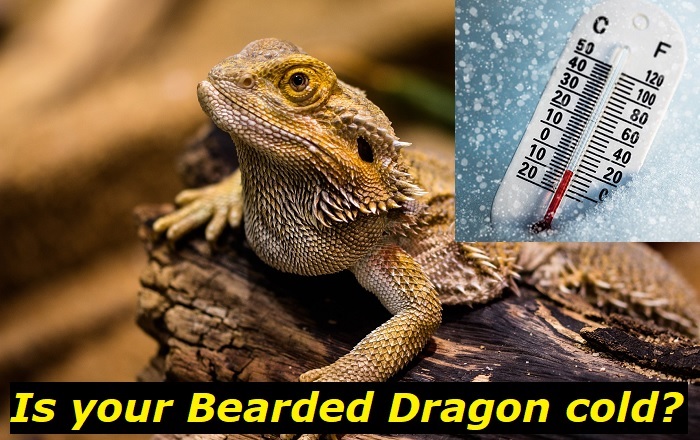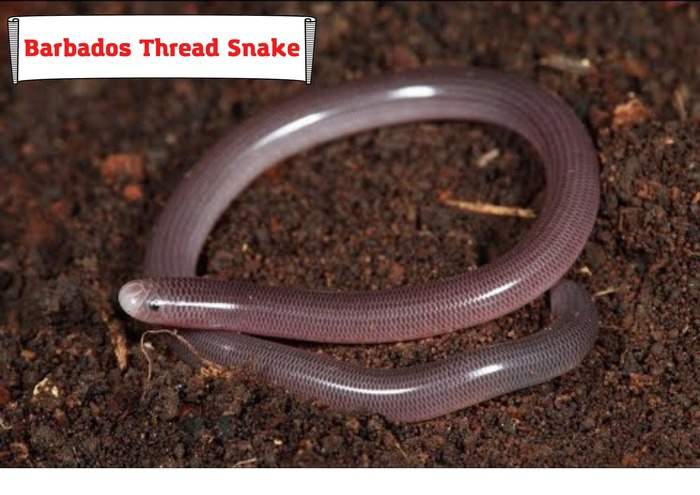While bigger reptiles like the Komodo dragon may lose heat over an extended period and can survive long hours at a low temperature, the same is not true for small lizards like bearded dragons. What this means is that they are not able to survive for long at low temperatures because they lose heat fast.
But what is the lowest temperature a bearded dragon can survive?
This article answers the question and discusses many other important things you should know about beardies and how much heat they need.

Do Bearded Dragons Need Heat or Cold?
Bearded dragons need both heat and cool temperatures. But they do not need cold. Exposure to extremely low temperatures could force them into brumation or even cause irreparable injuries.
Cold-blooded animals need heat because they rely on external heat sources to regulate their body temperatures.
Unlike mammals that regulate the heat in their bodies through various methods without needing an external source of heat, reptiles in their natural habitat need the sun to raise their body temperature.
They warm their bodies by laying on an already heated surface to soak up the heat at other times.
In captivity, they may rely on a basking light, heat mat, or any other artificial heat source that you provide.
But they also cool off sometimes by retreating into the shade. Your beardies will retreat into the shade when it has drawn too much heat from the heat source.
Beardies do not need cold at all. A temperature beneath 65°f for a long time can be fatal for your pet.
What Is the Lowest Temperature a Bearded Dragon Can Survive?
The lowest temperature a bearded dragon can survive is 65°f. Anything lower than that will lead to health problems for your bearded dragon.
Even at 65°f, they can only survive for a very short period. If the temperature drops lower or they tolerate a temperature of 65°f for too long, they will become inactive and lethargic. The reason is that they are ectothermic (cold-blooded animals).
The cold temperature will begin to impair the cellular functions of the cells in their bodies by stiffening membranes, slowing ion pumps, denaturing proteins, and even affecting energy balance.
The freezing of the body tissues will also cause a lot of stress. It can also lead to irreparable injuries and even death.
If your beardie has been exposed to a temperature below 65°f, you want to pay undivided attention to your critter. Any unusual changes may mean a serious injury or a health challenge. You want to immediately take your pet to a vet to prevent the worst.
Your beardie should have a consistent supply of heat from a direct heat source during the day. You must ensure that it is not exposed to a cold temperature for more than 24 hours.
How To Tell When Your Beardie Is Cold
In extreme conditions, after prolonged exposure to cold temperature, the body of your bearded dragon will begin to prepare for brumation. But that is only in extreme conditions.
Generally, lethargy and inactivity are the most visible sign that your beardie is cold. You will notice that your beardie moves less and even in a somewhat slower motion.
Other symptoms will include slower metabolism. You will notice that your beardie has a decreased appetite. This is usually because its body is yet to process the food in it.
What Is the Ideal Temperature for Your Bearded Dragon?
Knowing the ideal temperature for your bearded dragon is important to maintain its health and keep it in good condition. At the different stages of its growth, a bearded dragon needs some specific temperature to stay healthy.
The temperature of a bearded dragon’s enclosure should depend on the bearded dragon’s age. They need a higher temperature at a younger age. But as they grow older, you want to reduce the temperature range of their enclosure.
Here are the temperature ranges for the different growth stages of the bearded dragon;
Baby Beardies (0-5 Months Old)
- The ambient temperatures of the enclosure – 80°f to 85°f
- Temperature Range for Basking Area – 95°f to 110°f
- Cooling Area – 80°f to 90°f
Juvenile Beardies (6-18 Months Old)
- Temperature Range for Basking Area – 95°f to 100°f
- Cooling Area Temperature Range – 80°f to 90°f
Adult Beardies (Over 18 Months Old)
- Temperature Range for Basking Area – 90°f to 93°f
- Cooling Area Temperature Range – 80°f to 90°f
Temperature Concerns at Night
Normally, the temperature within the enclosure during the night should drop to the range of 72°f – 80°f. If after you turn off the heat and light sources, the temperature drops below 72°f, a heating device is a great alternative to provide heat without light that will interrupt the nighttime.
There are some nighttime bulbs precisely manufactured to mimic the moonlight while keeping the temperature close to the 72°f range.
It would also be best to create a temperature gradient in the enclosure. This will ensure that your reptile adjusts to its environment according to how much heat it needs. You want a stable temperature gradient across the enclosure.
To achieve this, ensure that the area under the basking spotlight is the hottest. You also want to ensure that it is opposite the coolest enclosure area. Both should be at opposite extremes.
Ideally, the temperature under the basking element should be the hottest, and the temperature should gradually cool down to the coolest part of the enclosure. You can achieve this temperature gradient with thermostats specifically designed for reptile enclosures.
What Can You Do for a Cold Bearded Dragon?
As mentioned earlier, the effects of exposure to a temperature below 65°f or 65°f for too long are not desirable. Your beardie is at risk of irreparable injury to its freezing body tissues, slow bold flow, and even death.
So what can you do when you notice that your beardie is cold or showing frightening signs of being cold?
If the reptile was out of the tank, it would naturally look for warmth. Places to search include the exhaust areas of air conditioning units, clothes dryers, other appliances that emit heat, and even warm places like the garage. When you find the beardie, you want to warm it up by putting it in warm water.
The water should not be hot as hot water will injure the reptile. You want to place it in warm water. Leaving it in a bowl of warm water will hydrate its skin and slowly warm it up.
As soon as your beardie’s tissues begin to warm up and it can respond to touches, you want to dry it with a towel and put it in a warmed tank with an ambient temperature of range of 105°f – 110°f in the basking area.
When your heat lamps go off at night, your beardie can get cold as the dip in temperature affects the optimal temperature range within the enclosure. What can you do for your cold bearded dragon?
Here are some ways to keep your cold reptile warm:
- Use a heat mat
If you already incorporated a heat mat in the enclosure, you want to reposition it well to help your beardie keep warm. If you haven’t, but you have one laying around, it would be wise to fix it in your reptile’s enclosure quickly.
Although heat mats are normally placed on the floor, it would be safer and better to place them vertically to avoid burns and keep your pet safe. You want to place the mat on one side of the terrarium.
- Use grain pillows
Grain pillows are a great alternative for providing heat in an emergency, such as when your heat lamps give out at night.
Grain pillows that contain grain like rice, buckwheat, and corn can hold heat for an extended period. Another great thing about these grain pillows is that they are cordless. You only have to put one in the microwave for a 30 seconds interval to reach a safe heat level.
After heating the bag, you want to leave it in the enclosure to provide the needed heat for your reptile. Paying attention to how hot the grain pillows are is important to prevent any burning injury to your pet.
Some advocate warm baths, but this could ultimately lower your pet’s temperature, especially if you forget or neglect to wipe off all the water from its body.
Final Thoughts
Heat is important to keep your bearded dragons healthy. Although they are distributed across various habitats, they naturally prefer warm and arid areas. You will find them in the deserts in Australia, savannah regions, subtropical woodlands, and even scrublands.
The temperature in these habitats is usually high, and that is why they prefer these areas to the cool canopy forests, which have a lower temperature.
If you want to keep your beardies healthy and avoid the chances of serious health complications, it would be best to replicate the temperature of their natural environment. You also want to ensure that effective emergency systems are put in place in the event of a temperature dip below 65°f.
- Dubia Roach Egg Sack: How To Understand if It’s Healthy? - January 2, 2023
- How To Feed African Dwarf Frog While on Vacation? - December 26, 2022
- Baytril for Bearded Dragon: Here’s What You Should Know - December 19, 2022



